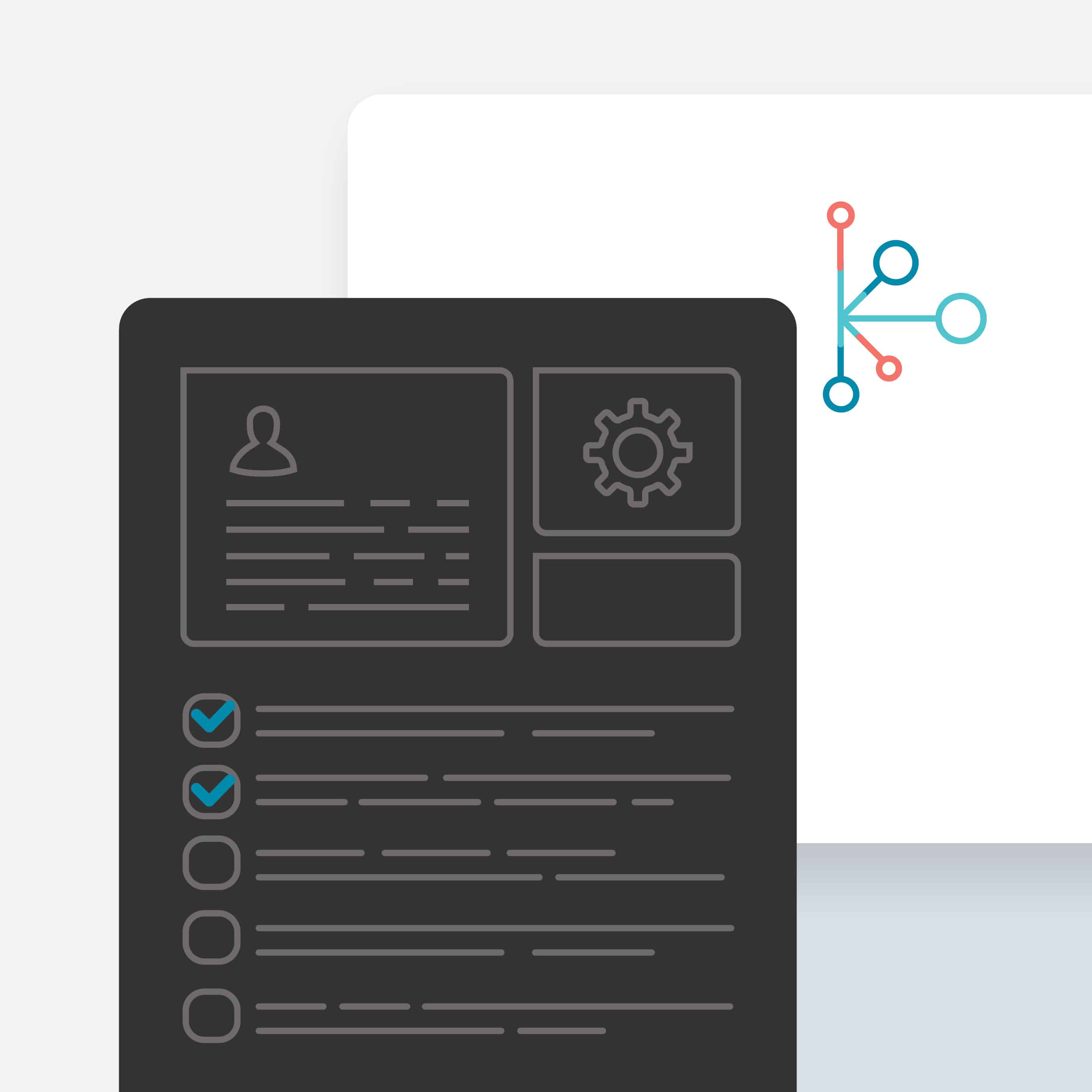As you adapt your talent strategy for the digital economy, upskilling will play a vital role in keeping pace.
Upskilling also creates a powerful strategic advantage for organizations that find a way to normalize it in their operations. In fact, the World Economic Forum predicts that investing in upskilling and reskilling the global workforce will increase global GDP by $6.5 trillion by 2030.
Managers can use these upskilling examples and best practices for upskilling their teams.
What Is Upskilling and Why Is It Important for Your Organization?
At its most basic, upskilling means investing in honing the workforce’s existing skills to fill current and future needs. Along with reskilling, upskilling is a crucial component of today’s talent strategy.
Upskilling is the process of elevating existing skills to the next level. Typically, upskilling occurs along a set career path, giving employees clear opportunities for advancement as they level up their skills.
Upskilling can include “soft” skills that can be advanced and specialized to fill workforce skills gaps. Increasingly, these skills are in high demand in the marketplace. Emotional intelligence, for example, can be advanced to support better leadership in remote and hybrid work environments.
Upskilling is also crucial for technical skills. Aptitudes for working with technology must be consistently improved to successfully carry your company through digital transformation. An HR professional with some data analytics experience, for example, can advance their data analysis skills to move into a more specialized workforce analysis role.
Upskilling keeps your workforce adaptable and up to date with industry trends. It’s quickly becoming an essential component of performance enablement in the modern workplace. Roles and career paths are changing as more automation and artificial intelligence enter the mix. These introduce skills gaps, which must be closed quickly for the business to succeed.
Companies that don’t invest in upskilling risk falling behind their competition. Indeed, they risk falling apart completely. Constantly sourcing external talent to close skills gaps quickly becomes expensive, and it will impact your ability to quickly pivot in response to market demands.
Reskilling vs. Upskilling
You might see the terms “reskilling” and “upskilling” used interchangeably. They’re both important, but they are not the same thing.
Upskilling is linear. It starts with existing skills and hones them. A programmer, for example, can be upskilled to become a systems analyst.
On the other hand, reskilling prepares employees to move laterally or into newly created roles as work evolves to leverage digital transformation. For instance, many blue-collar roles are being replaced by automation, so employees in those roles must be reskilled to manage that technology. Upskilling isn’t always associated with a promotion, since employees can advance their skills and still move laterally.
The primary distinction between upskilling and reskilling is that upskilling builds on existing skills, whereas reskilling adds new ones.
3 Benefits of Upskilling Your Workforce
Upskilling produces several benefits, both for the business and for individual employees. Here are some of the most significant benefits upskilling brings to your company.
Adapt to Change in Real-Time
With the capacity to upskill internally, your company can adapt immediately rather than as talent becomes available externally. Companies with internal upskilling programs can train and deploy existing talent to fill those needs as they arise, without becoming reliant on an unstable labor market.
Save Time and Resources
Developing an internal upskilling strategy saves time and resources. The cost of internal learning and development is significantly lower than hiring and onboarding a new employee. With the quickening pace of change, by the time you find and train a new hire to fill a skills gap, their skillset may no longer even be what you need.
Improve Productivity, Engagement and Retention
A robust training and development program improves productivity, engagement, and retention. Learning new skills helps employees stay productive at your company longer. Instead of becoming outdated, they become more agile and able to work more efficiently.
When employees can see the learning opportunities available, they’re more likely to envision themselves with your company long-term. Options for upskilling prevent them from feeling trapped in their current role. Additionally, offering professional development signals interest in your workforce’s wellbeing, which also promotes employee loyalty and retention.
How to Develop an Upskilling Strategy
Developing internal upskilling and reskilling programs can be more strategic than relying primarily on external hiring to fill skills gaps. External hiring can be heavily reactive: Departments open requisitions as the need arises, and HR and talent acquisition teams fill them as needed.
An internal upskilling strategy can be much more proactive. Here’s how to develop an upskilling strategy.
Assess Your Current Skills Base
Systematically assess the organizational capabilities you currently have. This process may reveal gaps in your current team, but it may also uncover skills among your team members that you weren’t previously aware of.
Project the Skills You’ll Need for the Future of Work
It’s important to think about the skills you’ll need in the future, not just right now. For instance, many industries — like manufacturing, mining, and energy — are leaning heavily into automation. But as companies adopt automated tools, they’re finding that they need more human traits/soft skills such as creativity or people management to fill gaps.
Set Goals That Drive Business Results
Once you know where you stand, as well as where you want to go, you can set goals for your upskilling efforts that support strategic business objectives.
Continuously Monitor Emerging Gaps
Develop a system to regularly assess your team’s skills and close gaps as soon as they emerge. The sooner you address these skills gaps, the less disruptive your training efforts will be to regular operations.
3 Ways to Upskill Your Workforce
Upskilling needs to be built into the company culture and ways of working. If it isn’t practiced daily, your business risks losing ground to competitors. Here are some ideas for building meaningful learning experiences into your daily work processes.
Cross-Train Employees on the Job
Give employees opportunities to cross-train in other roles that require similar skill sets. This allows employees to learn on the job and refine their skills and aptitudes, laying the groundwork for future mobility into evolving roles.
An administrative assistant who demonstrates clear facilitation skills, for example, could cross-train as a project manager. The role calls on similar skills but takes them to the next level. Then, that employee can bring enhanced project management skills back to benefit their team.
Expand Roles to Include Learning Opportunities
Taking on new responsibilities can help employees enhance their skills. Give employees upskilling opportunities to participate in new, more challenging assignments or tasks in their current role.
You might ask an employee who displays leadership aptitudes, for instance, to lead a committee. This enhances the employee’s leadership skills and gives them the opportunity to decide whether a leadership role is a good fit for their next career steps.
Set Stretch Goals
Incorporate upskilling into employees’ ambitious professional development goals. If an employee sets a stretch goal of moving into a new role, for example, leveling up a particular skill might serve as a key result. Upskilling via stretch goals allows employees to change their mindset to achieve their goals. Employees will appreciate the attention to their career objectives, and the company benefits from developing more versatile skill sets.
A software engineer, for example, might set a stretch goal to deliver a high-impact project within half the normal time. This would challenge that employee to step up their coding skills and their time management skills.
The Best Upskill Resources and Courses
Upskilling keeps your workforce up-to-date, but you need to be strategic to prevent it from becoming too resource-intensive. Here are four upskilling options:
Massive Open Online Courses (MOOCs)
MOOCs like Coursera, Udemy, Envato Tuts+, or LinkedIn Learning provides access to thousands of courses to upskill your workforce. Some of these are available for free, or you can invest in an affordable subscription model.
To get the greatest benefit from these platforms, develop a list of courses that would benefit employees in specific roles. Train managers on the options that are available so they can help direct employee upskilling.
Formal Education
Degree programs and certifications support long-term upskilling. They provide a solid foundation that employees can continue to build up from.
Although traditional education can be expensive, there are ways to minimize the costs. For example, consider partnering with your local community college or university to explore your options for workforce education. Look into local grants or other government funding for continuing education, too.
Custom Training
If you work in a niche industry, it may make sense to invest in custom training, which can be delivered live or on-demand via a learning management system (LMS).
Ideally, your LMS will offer micro-learning and mobile-first delivery. It should be set up to prompt employees to upskill as they “unlock” new abilities. The easier it is to access learning, the more likely employees are to use the software.
Mentoring and Internal Training
Developing internal mentorship programs is a resource-friendly way to hone skills. An employee in an upper-level role, for example, can mentor their successor to share the skills they’ve developed over the years. Mentorship programs pass on institutional knowledge and build trust among employees as well.
Internal training programs devoted to soft skills like emotional intelligence, agility, adaptability, or curiosity help build a resilient workforce. These concepts are less tangible than hard skills and much harder to teach. With a robust conceptual framework, soft skills can be taught as concepts first, and then employees can practice them on the job. Learning in the flow of work doesn’t add costs, and can be much more effective than online learning modules alone.
Upskilling is an essential component of a robust workforce strategy. By implementing an internal upskilling strategy at your company, you create a workforce that is prepared to absorb and leverage change while your competition is scrambling to find new hires.







